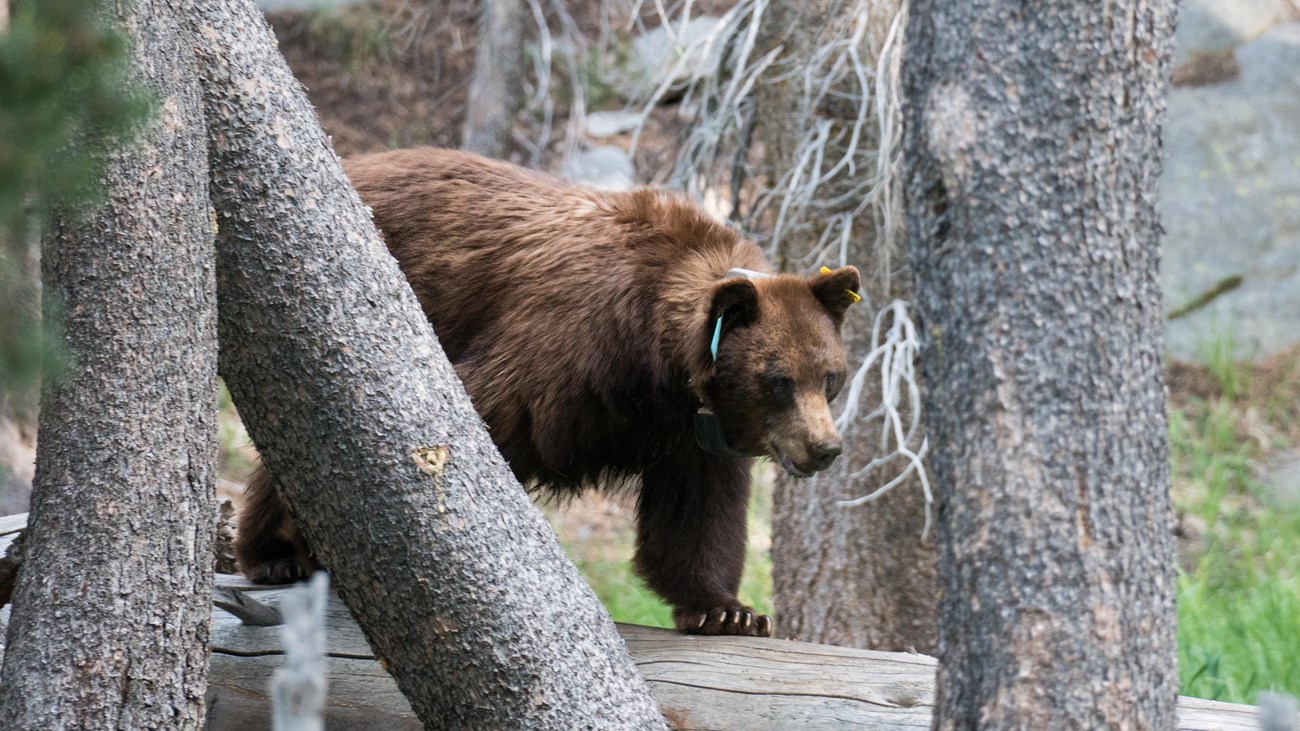Last updated: November 26, 2025
Thing to Do
Wildlife Safety in Yosemite

NPS Photo / R. Lester
Yosemite National Park supports more than 400 species of vertebrates including fish, amphibians, reptiles, birds, and mammals. The high diversity of species is the result of diverse habitats in Yosemite that are largely intact. The park’s rich habitats range from thick foothill chaparral to conifer forests to expanses of alpine rock. Animals feel at home in each location.
While seeing wildlife in Yosemite can be exciting, remember that it is illegal to approach or feed any wild animal in Yosemite, including birds and squirrels.
Wildlife can cause injuries and transmit diseases. Human food is unhealthy for wild animals. Animals used to being fed can become dangerous and be killed as a result. Stay at least 150 ft (46 m) from bears and coyotes. Stay at least 25 ft (8 m) from all other wildlife.
What to Do If You See a Bear
You may not see a bear during your visit because bears naturally avoid people. If you do see a bear, what you should do depends on the situation. In any case, always let a ranger know or leave a message at 209/372-0322. If a bear is attempting to get human food or won't leave a developed area, you can call 911.
Bear in a Developed Area or Approaching You
If a bear approaches you or if you are in a campground, picnic area, parking lot, lodging area, or other developed area, act immediately to scare it away. Scare the bear away by yelling aggressively and as loudly as possible until the bear leaves. The bear is intruding on your personal space: act angry and be persistent. If you are with other people, stand together to present a more intimidating figure, but do not surround the bear. While never a guarantee, these techniques are highly effective when done well. (Bear spray/pepper spray is not allowed in Yosemite.)
If you have food out and are having trouble scaring the bear away, pack up all your food and leave the area. Throwing food at the bear or leaving food behind will only encourage its behavior and likely result in the bear's death. Never have out more food than you can control and do not leave food out of arm's reach, even for a moment. (Do not try to take back food that a bear already has.)
The purpose of yelling aggressively is not to harm the bear, but to scare it from the area and restore its natural fear of people by providing a negative experience. Scaring a bear away, along with storing your food properly, helps keeps bears wild and alive.
Bear Outside Developed Areas and Not Approaching People
If you see a bear away from development and people, keep your distance (at least 50 yards, or about the distance four shuttle buses parked end to end would take up). If you get closer, you will be helping the bear become used to being around people.
Bears that become comfortable around people lose their natural fear of us and sometimes become too aggressive; sometimes they then have to be killed.
When a ranger sees a bear, the ranger may use non-lethal aversive tactics to chase the bear out of a developed area. During your visit, you may see and hear rangers patrolling public areas for bears. You may hear rangers yelling at and chasing bears. You may also see or hear rangers shooting noisemakers or non-lethal projectiles (such as rubber slugs from a shotgun or clear paintballs from a paintball gun). The intent is not to harm the bear, but to scare it from the area and restore its natural fear of people by providing a negative experience.
NOTE: These regulations and precautions help decrease the chance of personal injury or property damage. However, bear damage and confrontations are still possible even when all of the above guidelines are followed. Failure to comply with these regulations may result in citation and/or impoundment of property.
Birdwatching
Yosemite National Park provides essential habitat for over 165 species of migrating, wintering, and breeding birds, in addition to nearly 100 species recorded as transient or vagrant. Designated a World Heritage Site and an Important Bird Area, the park harbors diverse avian assemblages and habitats, numerous bird species of special concern, and prized habitat ranging from gently sloping foothill grasslands, through chaparral/oak woodland and giant conifer forests, up to windswept alpine meadows and peaks.
The most regularly seen resident birds include Steller's jay, American robin, acorn woodpecker, common raven, and mountain chickadee. In spring, look for the bright red wing patches on the red-winged blackbird (most often seen in wet meadows) or the tropical looking western tanager foraging in the conifers. Near rivers and streams, watch the american dipper dart in and out of rapids and listen for their beautiful melodious song.
Some of the more sought-after birds to see in Yosemite include the great gray owl, spotted owl, peregrine falcon, pileated woodpecker, and northern goshawk.
In general, quiet forests and meadows away from developed areas (particularly in the mornings) are the best places to see some of the less common birds. Keep in mind basic birding etiquette; tread lightly and quietly and please follow park rules by refraining from using broadcast bird calls to elicit responses.
More Resources for Birdwatching in Yosemite
-
Bird checklist [343 kb PDF]
-
To add to the park's scientific study of birds, email the park ornithologist of any unusual sightings or observed behaviors (include location details).
-
Join a Yosemite Conservancy guide for a birding excursion! In addition to several custom birding outings each year they also offer multiple programs on birds.
-
Check the Yosemite Guide for current program offerings.
